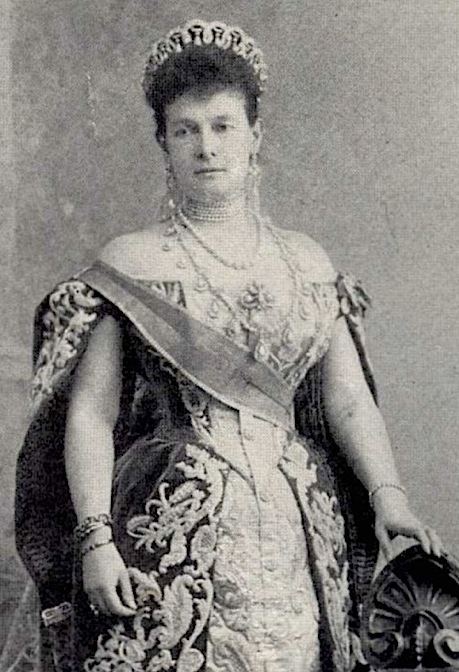Phone +46 8 545 077 70 | ||
 | ||
Address Sturegatan 6, 114 35 Stockholm, Sweden Hours Open today · 10AM–6PMWednesday10AM–6PMThursday10AM–6PMFriday10AM–6PMSaturday11AM–3PMSundayClosedMonday10AM–6PMTuesday10AM–6PM Similar Kaplans Auktioner AB, Stockholms Auktionsv, Hovjuvel Gunnar Fahlström, Auktionsk, Sotheby's Scandina AB | ||
The House of Bolin is one of the oldest firms specializing in jewelry and silverware that remains in the hands of its founding family.
History
The firm's archives once dated as far back as 1796, and its founder, the German-born jeweler Andreas Roempler, was established in St. Petersburg as early as 1790. In the registers of the German colony of this city he is called Master of Diamonds. He functioned as official appraiser to the Russian Imperial Court from the early 1790s. His eldest daughter, Sofia, married Gottlieb Ernst Jahn, a goldsmith, who subsequently became Roempler's partner. Jahn is known to have supplied an opal and diamond jewelry suite, comprising a tiara, necklace and bracelet, at the occasion of the christening of Grand Duke Nicholas Nikolaevich of Russia on 17 May 1834. The price of 169,601 roubles was the highest ever paid for a christening gift in the nineteenth century.
In 1833 Carl Edvard Bolin arrived in St. Petersburg and began to work for Andreas Roempler. In 1834 he married Ernestine Catharina, another daughter of the recently deceased Roempler, becoming a full partner at the occasion of his marriage. The firm was henceforth named Jahn & Bolin. Brother-in-law Jahn died in 1836, leaving Bolin as partner to Jahn's widow. In 1839 the partners submitted a request to become Jewelers to the Imperial Court, which was granted. The name Jahn & Bolin prevailed for another two decades.
Bolin rapidly became the most important jeweler in St. Petersburg. At the peak of his activity, he supplied more to the Imperial Court than all other jewelers put together. Towards the end of the nineteenth century some of the leading Paris houses, in particular Boucheron, established themselves in Russia, and were granted commissions. From the 1890s, Bolin's main competitor was Fabergé, and although the Bolins continued to make most of the large pieces of jewelry for the Court, Fabergé surpassed Bolin in numbers and possibly also in turnover. The total invoiced was 339,400 roubles.
In 1836 Henrik Conrad, then only sixteen years old, joined his elder brother in St. Petersburg, staying with Carl Edvard until 1852 when he opened a shop of his own in Moscow in partnership with an Englishman, James Steuart Shanks. Their shop was called Shanks & Bolin, Magasin Anglais, and was situated on the exclusive Kuznetski Most. They sold not only jewelry and silverware (this being Henrik Conrad's department) but also ladies' luxury accessories such as handbags, gloves, plumes, luxurious underwear, etc. This partnership did not last long and Henrik Conrad continued the business alone, though the Shanks an Bolin name continues on silverware until the 1880s. His specialty was fine silverware which he manufactured and sold in Moscow and with which he supplied his St. Petersburg relatives. Originally the silver workshop was run by Maria Linke, and later by her son, Konstantin.
In 1864 Carl Edvard Bolin died in St. Petersburg, leaving his part of the firm in the hands of his sons Gustaf and Edward. When Henrik Conrad died in 1888 in Moscow he left everything to his three daughters. His sons, in his opinion, had received an expensive upbringing and training which was to be their sole legacy. To make it possible to continue the business, his eldest son Wilhelm James Andreevitch Bolin opened a branch for his St. Petersburg cousins called C. E. Bolin. He continued on his own in Moscow, very much in the old tradition and was especially interested in silverware, bringing in young French sculptors as designers and making magnificent pieces in the somewhat overladen style of the 1880s. Eventually, he adopted the Art Nouveau style, often combining glass (Lalique), ceramics and cut crystal with silver mounts. In 1912 he took over the Moscow shop in his own name W.A. Bolin.
In St. Petersburg the two brothers, Gustaf and Edward, who in 1912 had been granted the title of hereditary noblemen with the right to bear a coat-of-arms, continued as one of the foremost jewelry houses. Sadly, Gustaf died in 1916, creating a vacuum, as neither he nor his brother Edward had any heirs wishing to take over the business. Wilhelm Bolin, who had two sons, was interested. However, the Russian revolution put an end to such plans.
Wilhelm Bolin, like his father, kept his Swedish citizenship. In 1904 he purchased a property in the south of Sweden which he visited each summer together with his family. Showing foresight, he opened a branch office in Bad Homburg in Germany in 1912 - a spa visited by the Tsar and his family. At the outbreak of World War I a great deal of stock remained in Germany. Taking advantage of his Swedish nationality, Wilhelm Bolin, whose Russian belongings and assets were confiscated by the Bolsheviks, transferred his German stock to Stockholm and opened a shop there in 1916. The firm exists today as Jewelers and Silversmiths to HM King Carl XVI Gustav.
None of the archives of the Bolin firm have, as yet, been found. A number of invoices from Bolin to the Imperial Court have been discovered in the Imperial Archives in St. Petersburg. There may be more and research has been initiated to locate both them and Bolin's own records.
